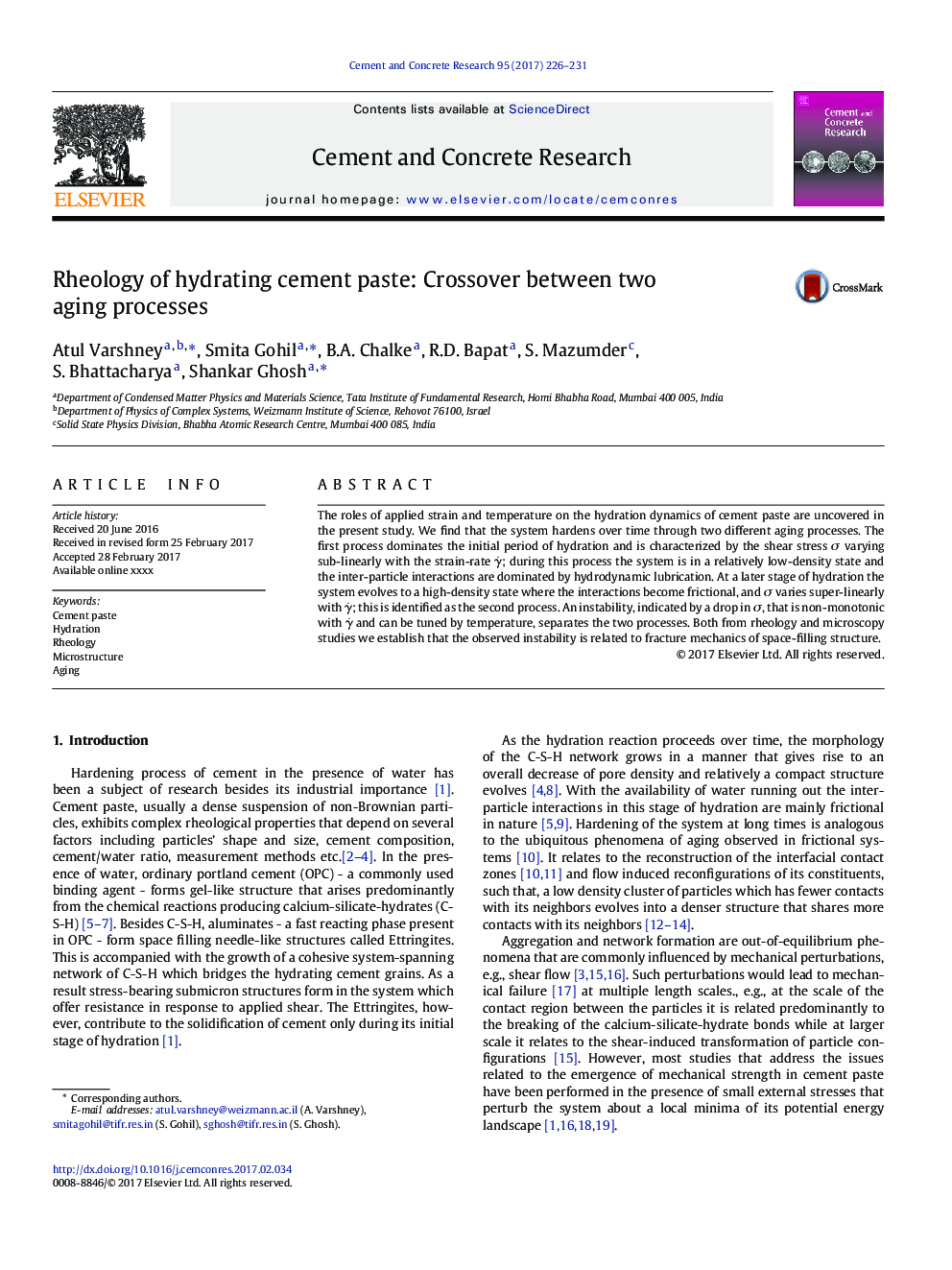| Article ID | Journal | Published Year | Pages | File Type |
|---|---|---|---|---|
| 5437070 | Cement and Concrete Research | 2017 | 6 Pages |
Abstract
The roles of applied strain and temperature on the hydration dynamics of cement paste are uncovered in the present study. We find that the system hardens over time through two different aging processes. The first process dominates the initial period of hydration and is characterized by the shear stress Ï varying sub-linearly with the strain-rate γÌ; during this process the system is in a relatively low-density state and the inter-particle interactions are dominated by hydrodynamic lubrication. At a later stage of hydration the system evolves to a high-density state where the interactions become frictional, and Ï varies super-linearly with γÌ; this is identified as the second process. An instability, indicated by a drop in Ï, that is non-monotonic with Î³Ì and can be tuned by temperature, separates the two processes. Both from rheology and microscopy studies we establish that the observed instability is related to fracture mechanics of space-filling structure.
Related Topics
Physical Sciences and Engineering
Engineering
Industrial and Manufacturing Engineering
Authors
Atul Varshney, Smita Gohil, B.A. Chalke, R.D. Bapat, S. Mazumder, S. Bhattacharya, Shankar Ghosh,
